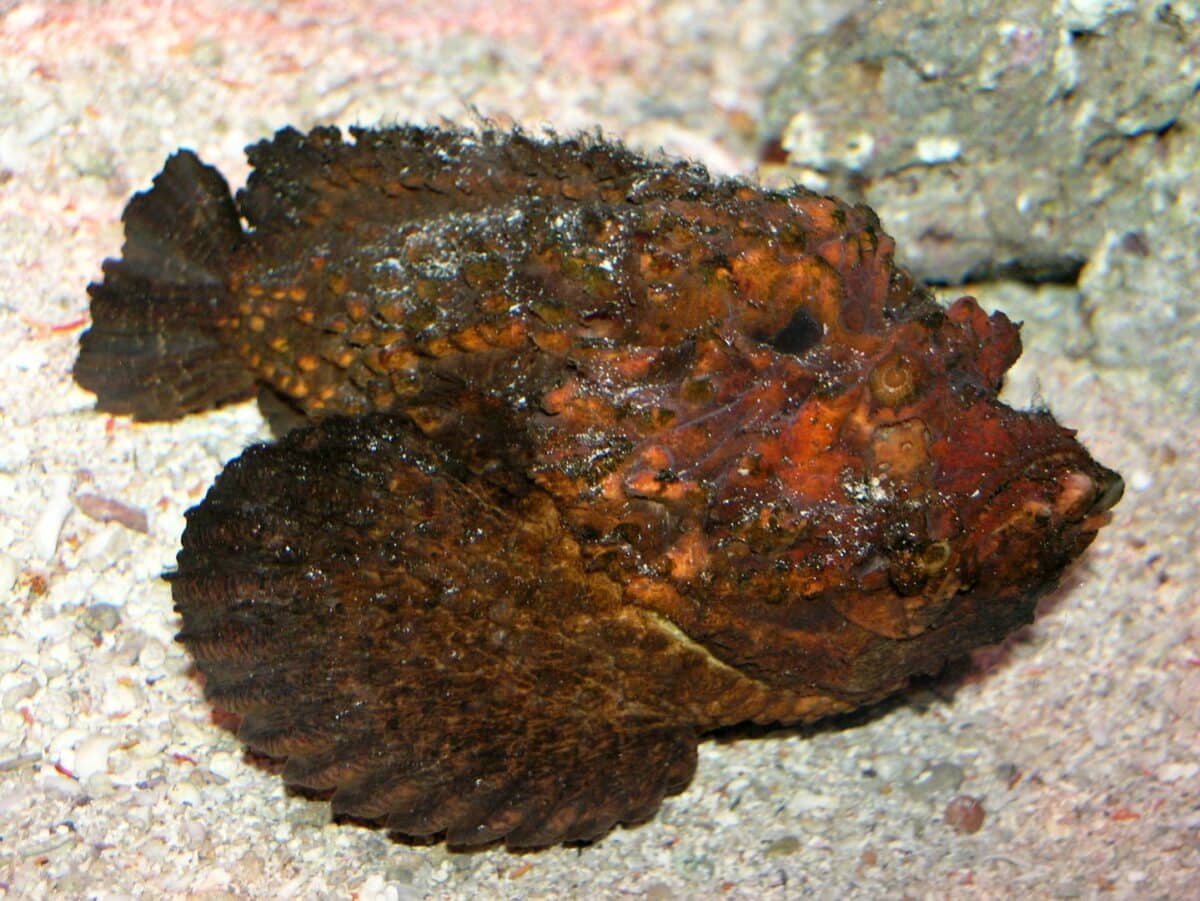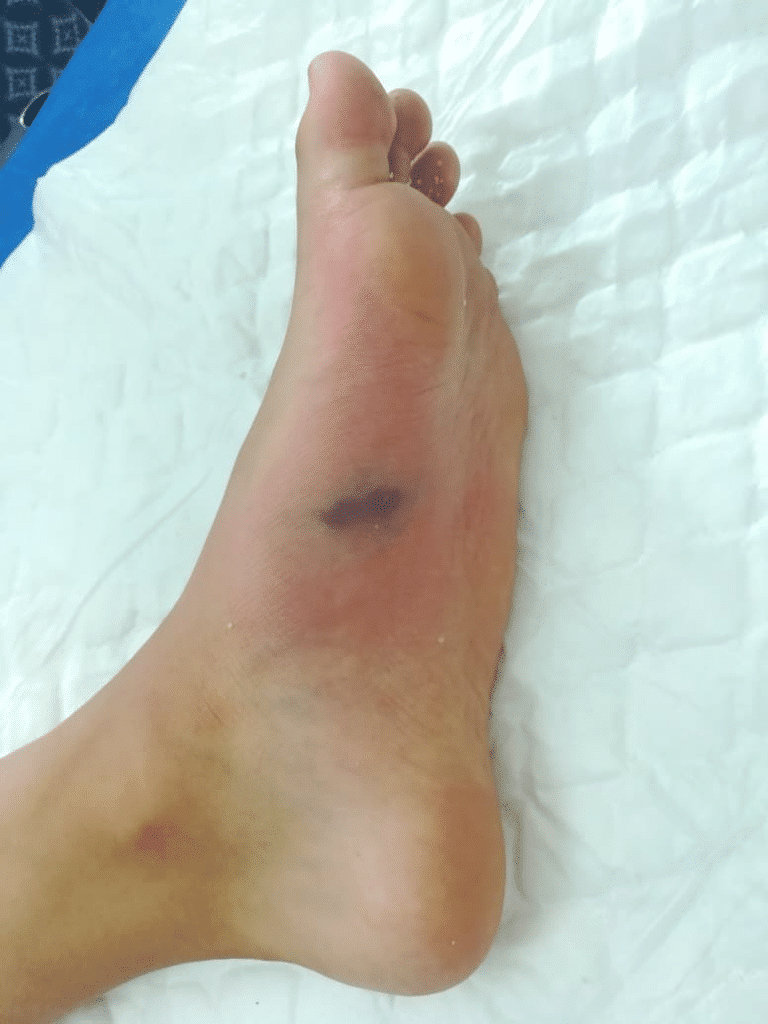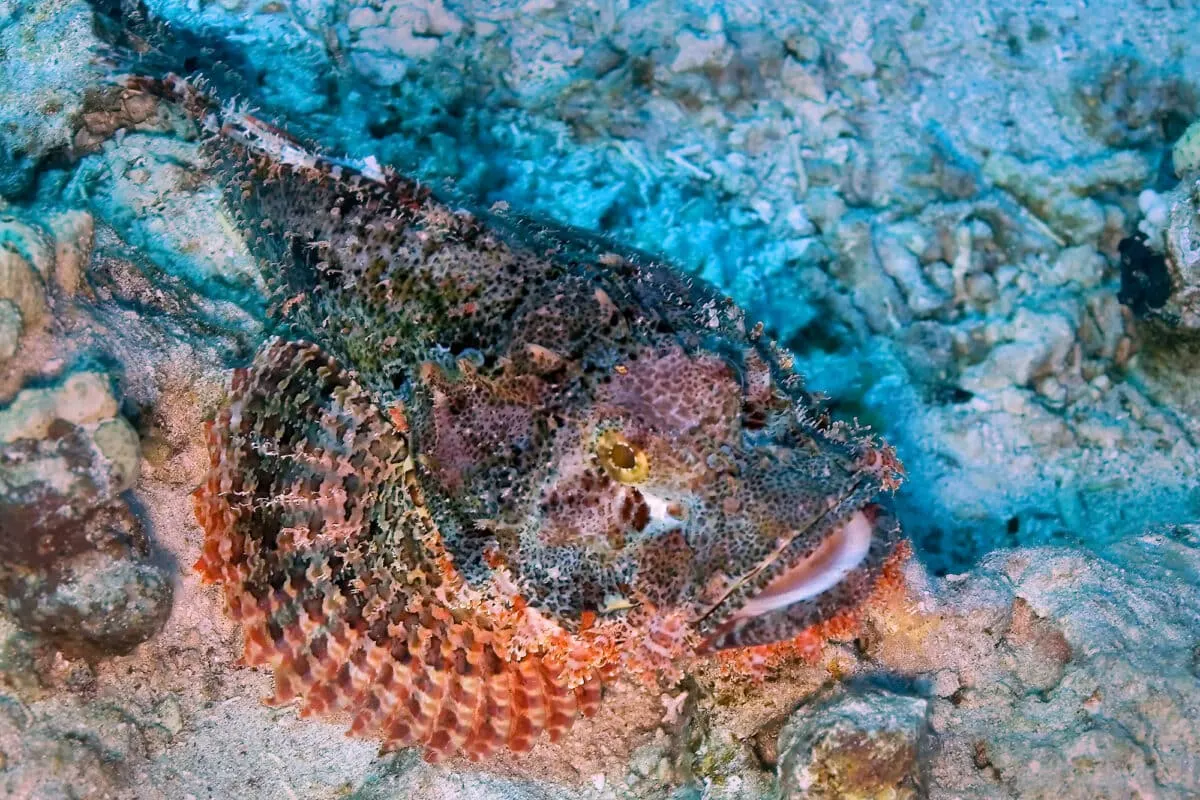Stonefish are one of the most poisonous marine creatures on the planet, and their bites can have severe consequences for humans. These fish inhabit shallow waters and reefs in tropical regions, including the Indo-Pacific and the Red Sea.
They are easily identifiable by their mottled brown and gray skin, which looks like stones, and their upward-facing spines that can deliver potent venom. When a stonefish bites, it injects a mixture of neurotoxins and enzymes that cause excruciating pain, swelling, and tissue damage.
Understanding Stonefish Bites

Stonefish are dangerous marine creatures that possess venomous bites, which have the potential to cause intense pain and be life-threatening. For this reason, they often go unnoticed, and many unsuspecting swimmers accidentally step on them. Stonefish commonly inhabit shallow waters throughout the Indo-Pacific region, including Australia, Southeast Asia, and the Pacific Ocean.
Stonefish bites are extremely painful due to the venomous glands located on their spines. These spines have tiny grooves that deliver venom straight into the wound, which can induce various symptoms, including nausea, vomiting, muscle weakness, breathing difficulties, and even heart failure.
The severity of the symptoms varies wildly, depending on the number of spines that have penetrated the wound, the fish’s size, and the injury’s depth. In severe cases, victims may experience excruciating pain that spreads to the entire limb or body, swelling, and inflammation. In some cases, the venom can cause severe neurological damage or paralysis.
Despite their potentially deadly bites, Stonefish are not very aggressive creatures and usually only attack in self-defense. However, the statistics on stonefish bites are alarming. According to reports, stonefish bites are responsible for numerous medical emergencies yearly, with thousands of cases reported globally.
This is especially true in Australia, where stonefish bites represent the most frequently reported severe injuries.
First Aid Treatment for a Stonefish Bite
Stonefish stings are regarded as one of the most painful injuries in the marine environment. Stonefish are notorious for their incredible camouflage abilities, making them difficult to spot underwater.
They also sport venomous spines that can cause severe pain, muscle weakness, and even cardiovascular collapse. Therefore, people who enjoy swimming, snorkeling, or diving in tropical marine environments should educate themselves on the proper first aid treatment for a stonefish bite.
Immediate Actions
Stonefish like to bury themselves in the sand, and they can get multiple stings by stepping on additional fish around the area.
Therefore, it is essential to safely remove the person from the water without further injuring them or yourself.
Then, flatten the affected area and avoid moving it to minimize the venom spread throughout the body.
Remove Foreign Objects
If the spine remains embedded in the wound, you should remove it immediately. Then, rinse the affected area with salt water to ensure no other foreign objects are left inside the wound’s crevices.
Clean and Stop Bleeding
After removing the embedded spine and any foreign objects, clean the wound with soap and water to eliminate any bacteria that could cause infection.
Apply pressure to the wound with a sterile bandage to stop the bleeding. It is also advisable to keep the injury elevated to reduce blood flow and slow potential venom spread.
Managing Pain
Stonefish stings are excruciating and require immediate medical attention. Victims should immerse the wounded area in hot water as hot as they can tolerate it.
This will help to neutralize the venom and reduce pain sensation. Additionally, you can administer over-the-counter pain medication or prescribed painkillers to alleviate the pain.
Additional Tips
A hospital visit may be necessary in severe cases where the venom has spread throughout the body. However, you can use other strategies with first aid treatment for mild stonefish sting cases.
These include using vinegar on jellyfish tentacles or immersing the wound in saltwater. Sometimes, a tetanus shot may also be necessary, especially for deep wounds. Keeping the damage clean from bacteria and monitoring its progress is critical.
Seeking Medical Help for a Stonefish Bite
Why Seeking Medical Attention is Crucial.
Even though a stonefish bite may not appear serious initially, any delay in seeking medical attention can result in severe complications. Stonefish venom is highly potent and can quickly spread throughout the victim’s body.
In some cases, the state of the bite may not be a good indicator of the severity of the injury. Therefore, it is always best to err on the side of caution and seek immediate medical help whenever bitten by a stonefish.
Indicators Of a Severe Bite
Several indications indicate that a stonefish bite is severe and requires immediate medical attention. These include extreme pain that persists for more than a few hours, swelling that is spreading rapidly, difficulty in breathing, severe nausea or vomiting, and dizziness or fainting.
Additionally, if the bite is on the hand or foot, it may cause the victim to experience numbness or tingling in the affected limb. If symptoms are present after a stonefish bite, the victim should seek emergency medical assistance immediately.

Recommended Medical Treatments
The medical treatments for a severe stonefish bite typically involve the use of antivenom and antibiotics. Antivenom is a medication that neutralizes the venom and helps to prevent further damage to the victim’s body.
Antibiotics are also used to avoid infection and to promote the healing of the wound. In addition to these medications, the victim may require additional pain management and injury care, depending on the severity of the bite.
Recovery Time and Long-Term Effects
The recovery time for a stonefish bite can vary depending on the injury’s severity and the medical treatment’s effectiveness. Most victims experience relief from pain and other symptoms within a few days of receiving medical attention.
However, recovery can take several weeks or even months in severe cases. In some instances, the long-term effects of a stonefish bite can include chronic pain, nerve damage, and reduced mobility in the affected limb.
Therefore, following the recommended treatment plan and adhering to any follow-up appointments is essential to reduce the risk of long-term complications.
Conclusion
In conclusion, it is essential to take precautionary measures to avoid being bitten by a stonefish. This can be done by wearing protective footwear while walking in areas with coral reefs, particularly in shallow waters where Stonefish are commonly found.
It is also crucial to avoid putting your hands or feet in places you cannot see, as this can lead to unintentional contact with a stonefish. In the event of a stonefish bite, it is essential to seek medical attention immediately. While waiting for medical help, washing the affected area with warm water for at least 30 minutes is critical.
This can help to neutralize the venom and minimize the extent of the injury. Learning first-aid interventions for a stonefish bite is essential, as time is of the essence. This can include immobilizing the affected area and elevating it to reduce swelling.
Overall, the consequences of a stonefish bite can be severe and even fatal in some cases. By taking the necessary precautions and learning how to treat a stonefish bite properly, individuals can help minimize the risk of injury and ensure proper care in the event of an accident.
It is essential to be aware of the risks associated with Stonefish and take appropriate action to protect oneself and others in their presence.
If you enjoyed reading about Stonefish, make sure you have a look at the Pollock Fish, Mullet Fish, Walleye Fish, and the Top 10 Cutest Fish in the World!
Join our Forum for free today!

- Usain Bolt vs. Peregrine Falcon – Speed Test in Their Domains - May 18, 2024
- Top 10 Animals in Yellowstone National Park - April 12, 2024
- Top 10 Omnivores - March 9, 2024



